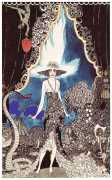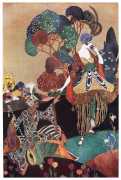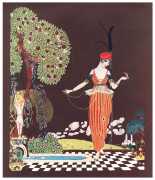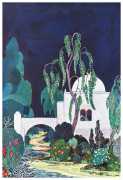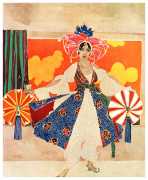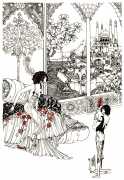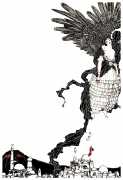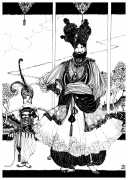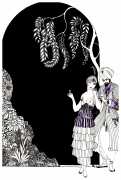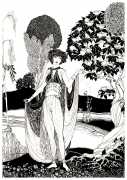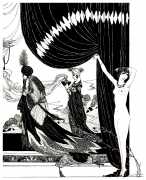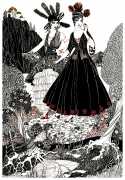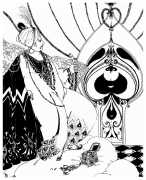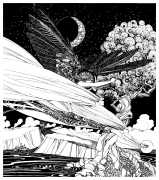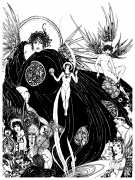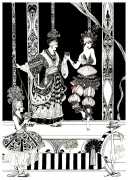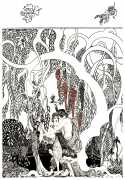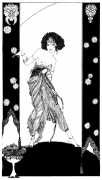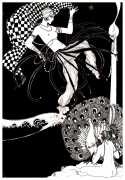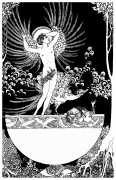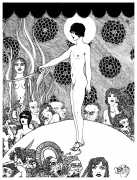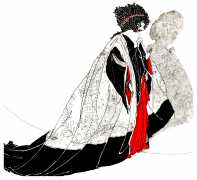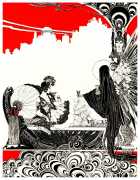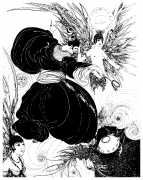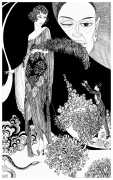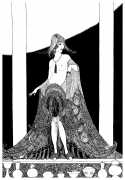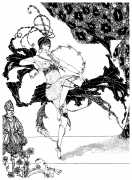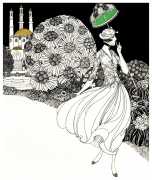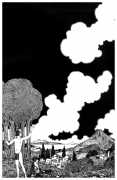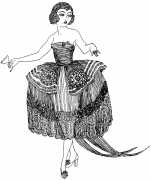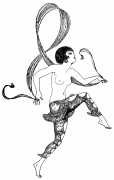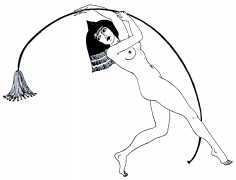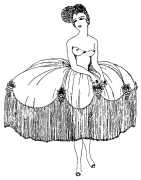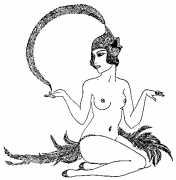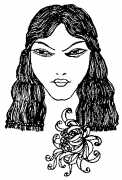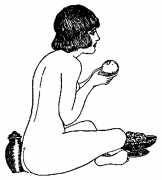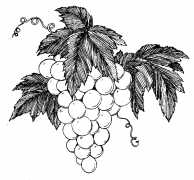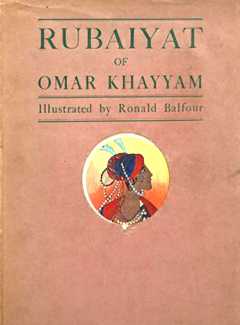 Immensely popular in the early twentieth century, the Rubáiyát, a selection of Persian quatrains attributed to Omar Khayyám (1048–1131), harks back to a romantic time of peace and beauty when all that mattered were the simple things of life:
Immensely popular in the early twentieth century, the Rubáiyát, a selection of Persian quatrains attributed to Omar Khayyám (1048–1131), harks back to a romantic time of peace and beauty when all that mattered were the simple things of life:
A book of verses underneath the bough,
A jug of wine, a loaf of bread – and thou
Beside me singing in the wilderness –
Oh, wilderness were paradise enow!
This luxury edition of the Rubáiyát uses the 75-quatrain translation by Edward FitzGerald, first published in 1859.
Each quatrain is given its own left hand page, faced by either a line drawing or a tipped-in plate. The tipped-in plates are intended to illustrate their facing quatrains, though the connection is sometimes a little tenuous. The small line drawings, almost all of young women either in fancy costumes or various stages of undress, appear to be mainly space-fillers with little in common with the text.
Balfour claimed that he had never seen the work of Aubrey Beardsley when he created these Rubáiyát illustrations, but the similarity in style belies the claim, especially as anybody interested in illustration in the 1920s could hardly fail to know Beardsley’s work. Balfour’s style also has much in common with his contemporary Kay Nielsen, whose work he also surely knew. Especially for an untrained artist, these are original and accomplished drawings, combining a western take on traditional Persian art with an unmistakable 1920s flapper look to be expected from an artist who was also a fashion designer. The use of small areas of colour in otherwise monochrome line drawings is particularly striking.
The Balfour-illustrated Rubáiyát was published by Constable and Company, London.
The amateur historian Bob Forrest has written a detailed analysis of many of the Balfour Rubáiyát plates, together with a history of the Constable edition, which you can find here.


